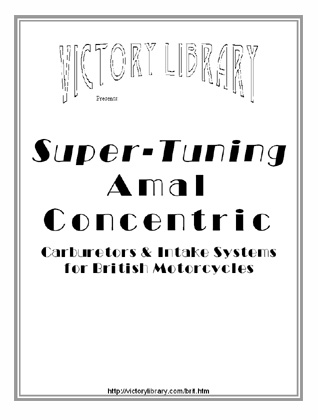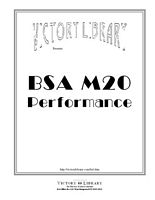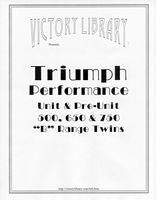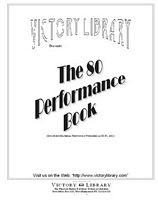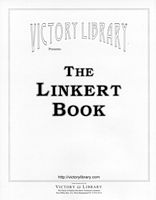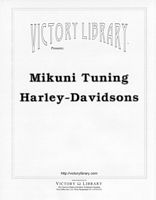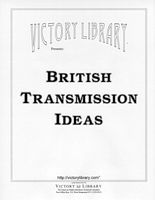|
|
 |
Planning a Nitrous Motorcycle Engine
Constructing a serious motor for nitrous use requires different priorities than a normally-aspirated motor. Here I will touch on some of the more important factors regarding the details of the motor itself. The assumption made is that the motor is being either built or re-tuned to make optimum use of a good-sized nitrous system between 20 and 75 hp. Design and selection of the nitrous system itself is beyond the scope of this article.
Heads
The intake port & valve are normally larger than
the exhaust port & valve, as the mechanical pressure of the rising
piston is more efficient at expelling exhaust gas than the vacuum of the
descending piston is at drawing fresh mixture in. If the motor is well
designed, the efficiency of flow between the two sides will be nearly equal.
This relative flow balance between the intake and exhaust sides is affected
by nitrous use.
The exhaust system (cam, valve, port & pipe)
is not sensitive to the nitrous itself, but only to the increase in exhaust
gas flow, regardless of the source. The exhaust should be re-designed towards
a larger displacement motor, requiring more flow from every component.
The target “size” is roughly based on the amount of additional nitrous
to be used. For example: a 750cc motor developing 50hp with a 20hp nitrous
system should have an exhaust system suitable to (obviously) 70hp, more
like a mild 1000cc motor. This is especially true since nitrous adds torque
in a fixed amount throughout the rpm range, not just peak power. The motor
becomes more like a milder but bigger motor, rather than like a more powerful
“race” version of the same motor.
A larger exhaust valve should be considered (where
practical). In a serious (large nitrous) motor, this may require a compromise
in the choice of intake valve size. To determine the maximum exhaust valve
size, the total of the head diameters of the intake and exhaust valves
should be maintained (unless you have expert knowledge otherwise) to prevent
valve head contact. After installation, the bowl area should be increased
to match the new seat area.
The exhaust port ID should be enlarged proportionate
to the new valve size, as practical. Do not attempt to match the port ID
to the primary pipe ID, or even blend or taper the transition area.
The exhaust valve face and seat width should be increased somewhat to allow greater heat transfer. I suggest .080” as a minimum.
Cam
Adjustments to the flow balance are frequently made by
extending the cam timing on the side with lesser efficiency. Since nitrous
only improves the flow of the intake system, the cam choice should give
added weight to exhaust timing, generally 10° more than usual.
The preferred lobe separation angle (intake to exhaust
centerlines) is generally wider than used in performance applications,
about 110-114°.
If the cam is not being changed at this point, consider
biasing the event towards the exhaust side by using offset rocker buttons
on the exhaust only.
Exhaust
The diameter of the primary pipe should be increased, usually by 1/8” to 1/4”, even if the actual port cannot be made larger.
Ignition advance
Maximum spark advance must be reduced, at least during periods of nitrous activation. Some manufacturers suggest 4° per 10% of the original power added (50 hp + 20 hp: 8°, etc.). This is especially important in high gear, as the motor is under maximum load (no torque multiplication, and wind resistance as well as vehicle weight must be overcome). High power-to-weight ratio bikes may tolerate near-normal spark advance in low gear only.
If no spark retard device is used, the auto-advance should be re-curved for best effect. The motor may tolerate the same initial advance, with the reduction taken from the mechanical-advance curve.
Colder spark plugs must be used, with reduced gap to compensate for the higher cylinder pressure. Charrlie_S (a reader and Slant 6 owner), suggests that having the shortest possible ground electrode is extremely important. This allows for a shorter heat path, so the ground electrode does not start combustion.
The extreme increase in cylinder pressure will require more spark intensity - a high-output system is strongly suggested (MSD, Crane, etc.), complete with good coil and wires.
Fuel
The stock petcocks and fuel lines are not adequate.
The line size should be up-graded to at least 3/8”, preferably 1/2”, and
all fittings and restrictions reviewed and re-sized as necessary.
High octane should be used for safety, and to allow spark settings for maximum efficiency during normal (non-nitrous) operation.
Methanol can also be used in a separate fuel system with the following effects:
» Lower chamber temperatures.
» Less sensitivity to exact mixture strength; can be run very rich without substantial power loss.
» Spark advance setting can be more aggressive; methanol burns more slowly than gasoline.
However, the entire auxiliary fuel system must be purged and flushed immediately after use, or serious damage will occur due to corrosion.
Controls
Generally speaking, the consensus is that nitrous should
not be used below 3000 rpm. Motors with long rods (“n” = 1.80 or higher) should delay operation to 3500 rpm. For safety, the rev limiter (if used) should
also shut down the nitrous during a missed shift, driveshaft failure, etc.
Progressive nitrous controllers are available but expensive. They can’t increase the amount of power that a given amount
of nitrous will add, but they will permit closer management of the nitrous
level that the motor will tolerate under specific conditions. They can
also improve traction (if nitrous is used during launch). They function (generally) by creating a “duty cycle” (very short period of solenoid-open operation, similar to the pulsing of an electronic fuel injector), and vary the nitrous delivery by gradually increasing the duty cyle duration up to 100% (full-time). However, this rapid open-shut-open operation puts a heavy strain on the solenoid, which will wear out or fail sooner than in convention (non-timed) service.
A good (and less expensive) imitation of progression
can be had by using separate multiple nitrous & fuel solenoid circuits
feeding the same nozzles or bars, and activating them in sequence by switches.
Please note: by making the stages 2 different sizes, you can have the effect
of 3 stages with only 2 sets of solenoids (this requires only 1 extra pair of extra solenoids (nitrous & fuel), plus the lines and fittings).
For example: if nitrous circuit
A = 10 hp, and B = 20 hp, then a sequence
of A only, then B only, then A + B causes this effect: motor + 10 hp, then motor + 20 hp, then motor + 30 hp.
Ignition timing curves can also be controlled by computer, as in the MSD Digital-6 Plus, Crane HI-6TRC, etc. ignition boxes. This allows the spark curve to be tailored to the motor’s torque curve. They both have a retard feature that can be triggered by the nitrous-control signal.
MSD ignition boxes can be retarded by the nitrous-control signal. The MSD-8975 accessory box allows 4 different rates of retard in 1 box. Multi-step retard is possible with manual
transmissions: minimal in 1st gear, more in 2nd, more in 3rd, maximum in
4th by using micro-switches on the shift cam. The current load that a
micro-switch can carry is minimal, so the switch should operate a high-current
relay, which operates the solenoid. The same switch could perform both
tasks: activate a nitrous stage, and retard the spark.
Pistons
Compression ratio should be kept to a conservative level
for best effect. Streetable ratios of 8.0 to 9.0:1 reduce torque, and will
make part-throttle response “soft” if a big cam is used, but permit larger
nitrous dosage.
In my opinion, there is a point of diminishing returns, where reducing the compression ratio even more (7:1, etc.) and adding more nitrous is not as practical, due to the reduced power in NA mode, limited cam timing, poor mileage etc.
If the total amount of nitrous to be added is known and limited, more compression can be used, but the point of detonation must be approached cautiously.
The top compression ring end gap must be wider (looser) than
std. to allow for higher dome and land temperatures under nitrous use. Rather than the usual .004” gap per inch of bore size, .006” is preferred for street use. The second ring gap goes from .0025” per inch of bore up to .0045”.
Cast (OEM or aftermarket) pistons will tolerate modest
nitrous use, but will fail if spark advance, jetting etc. are not accurate.
The next step is hyper-eutectic (high silicone) cast pistons, such as K-B,
etc. These have higher dome strength, and tolerate higher dome temperature,
but are not as strong as forged pistons. Be careful to follow the manufacturer’s
ring end gap specs carefully!
If using a custom forged piston (JE, Ross, Wiseco,
etc.) be sure to specify nitrous use to insure adequate dome thickness; usually .250” minimum. Thick-wall wrist pins are generally used, as a weight-saving thin-wall
pin may bend under nitrous.
Crankcase, crankshaft & rods
The ratio between the connecting rod length and the
stroke length (normally represented by “n”) can be calculated as follows: Ratio “n” = Rod Length ÷ Stroke.
For more details see my Tech Paper: “Connecting Rod
vs. Stroke”, click here:  . .
Combustion is affected by low “n” values (short-rod, 1.5 to 1.7-1 or so). The increase in piston speed away from TDC on the power
stroke causes the chamber volume to increase more rapidly than in a long-rod
motor - this delays the point of maximum cylinder pressure for best effect
with nitrous. Where the max-pressure point occurs later in the cycle, the average cylinder pressure is greater without the “spike” that causes damage. Delaying the point of maximum cylinder pressure allows more nitrous to be used with relative safety. Retarded spark and rich mixture also have this effect.
Piston motion away from BDC is slower, trapping a higher percentage
of cylinder volume, making the motor less sensitive to late intake valve
closing (hot cams). Intake valve closing can be more
radical than in a long-rod motor.
|
For more excellent ideas and details of planning
and using nitrous on your motor, I highly recommend David Vizard’s Book:
“The Complete Do-It-Yourself Guide to Nitrous-Oxide Injection”.
Click here to order, or see other titles by Vizard & other great authors:  |
|


